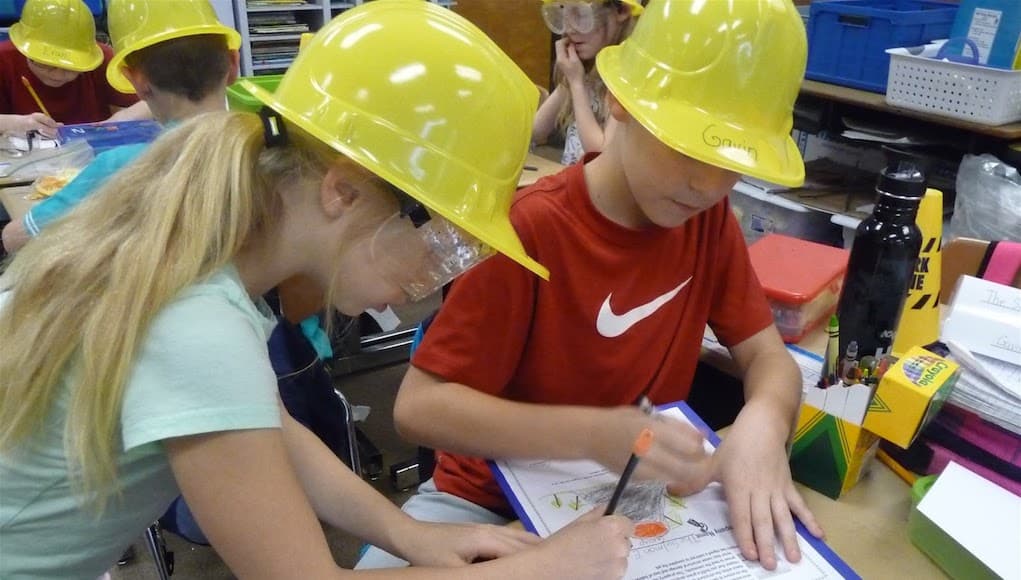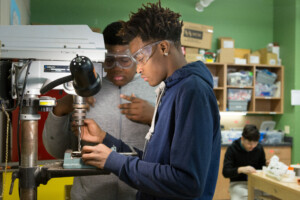Ready and Working: Pathway Programs Are Changing What It Means to Be Career Ready

It’s never been entirely settled whether schools should be preparing students for jobs – creating a skilled workforce – or preparing good citizens with transferable social and emotional skills while leaving the job training to employers. We’ve yawed and pitched on this point and, for most of our educational history, essentially split the difference by offering the imprecise choice between “career ready” or “college ready.”
Thankfully, that approach is evolving as many states and school districts have increased their investments in career preparation in new ways over the past few years. Oregon Connections, OC Pathways in Orange County, CA and Louisiana’s Jump Start are prominent examples, but there are plenty more out there as well.

These new career pathway programs, as they’re known, are different. Even though they are unquestionably career preparation, they don’t fit in that traditional “work or college” paradigm because business leaders, educators and policymakers have started to realize that that choice isn’t a choice at all. Good jobs and careers require job skills and further education and social and emotional skills.
This is what really separates these new pathway programs from their career-track/vocational predecessors – they synthesize three important experiences and tools of education and career readiness in ways that weren’t available to schools before: career insights from actual practitioners, teaching transferable workplace skills and aligning educational offerings with informed career interests.
Career Insights from People Actually Doing the Jobs
While many kids heard that they could do anything they wanted, those were often just words to students who lacked access to information about those jobs or access to the jobs themselves. For students in rural Louisiana, for example, dreams of becoming an astronaut or a TV writer were likely to remain just dreams because those careers simply weren’t accessible in any tangible way. But connective technology and mobility have removed some of the geographic and other barriers that made many careers seem implausible. As a result, those careers in television or space exploration, for example, are more approachable than they’ve ever been.
As technology helped open those doors, it revealed a new challenge. Teachers and school systems, on their own, could not possibly provide students with the basic information or insights to understand what all those new and exciting jobs are actually like.

Pathway programs solve this dilemma by turning to the career experts themselves, connecting students directly with the people doing the jobs they’re interested in. That way, teachers don’t need to be the experts in everything, they just need make the connections to the experts. Those connections can be made in person but are more efficient when made digitally. Online, teachers can introduce their classes to new career ideas or sit one student down with a career expert from anywhere in the world.
And to do that, teachers don’t need to keep rolodexes of botanists and blues guitarists or spend hours arranging appointments. Specialized technology providers like Nepris do the work by not just finding experts in thousands of fields but by connecting those experts to classrooms in real time as well as archiving conversations so they are accessible by educators anywhere, anytime to enrich classroom experiences. In connected pathway programs, students in Portland can connect with police detectives in New York, and students in Orange County to talk with ornithologists in India. When that happens, students can see the realities of doing the jobs they’re interested in and start to see themselves in those careers.
Workplace Job Skills That Work Everywhere
Understanding a job is one thing. Being prepared to do it is another. If delivering realistic information about new job options was impossible, adequately and accurately preparing students for those jobs was laughable. Aside from the basics, what lessons could a middle school teacher impart that are equally valuable to cartoonists and cardiologists?

Pathway programs attempt to clear that hurdle by using student career interests to teach basic and highly portable workplace skills such as how to deal with unfamiliar workplace adults, how to understand and meet work-related deadlines or address unexpected transportation issues. Regardless of what your career is, it’s a very safe assumption that you’re going to have to work with or report to someone or get to work.
Some programs go a step further. Instead of providing insights about careers from those in the field and teaching transferable workplace skills, they do both at the same time by having students work with and for people in the field. These are designed as virtual internships where students do actual work, not busy work. By doing both, students get deeper inside looks at the jobs as well as generic and career-specific skills. The combination makes students more confident and better prepared to engage thoughtfully considered careers than ever before.
Education Alignment
Finally, by giving students more and better information to hone their career interests and helping them learn workplace skills, pathway programs can also mentor students on educational choices that facilitate those interests. If a student shows great interest in a career in robotics and their passion grows when connected with robot designers, school leaders can ensure the student is taking challenging math and physics courses and is aware of, and prepared to apply to, colleges with specialized facilities.

The trifecta of career information, skills and classroom learning is powerful and promising and a far cry from the days when career training meant in-school classes in home economics or shop.
And it’s not the future of career-focused education, it’s the present. Districts and states from coast to coast are already fully active with pathways programs – giving their students serious advantages when they enter the workforce, whether that’s before college or after. In so doing, they’re changing the debate from whether students are “career” or “college” ready to simply whether they’re ready.
For more, see:
- What Do You Think About CTE?
- Enhancing a CTE Program to Boost Student Readiness
- The Future of Jobs Training: 2 Promising Career Prep Pathways
Derek Newton is a writer based in New York City who’s written about education for The Atlantic, Huffington Post and other publications. He is also the former Vice-President of the progressive think tank, The Century Foundation.
Stay in-the-know with all things EdTech and innovations in learning by signing up to receive the weekly Smart Update.






0 Comments
Leave a Comment
Your email address will not be published. All fields are required.